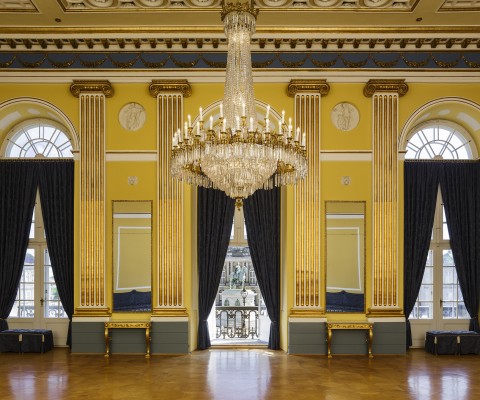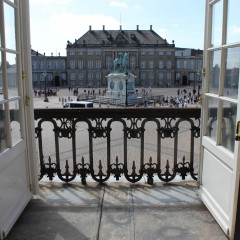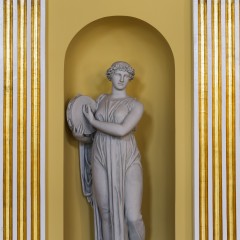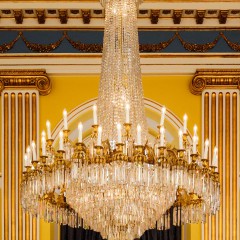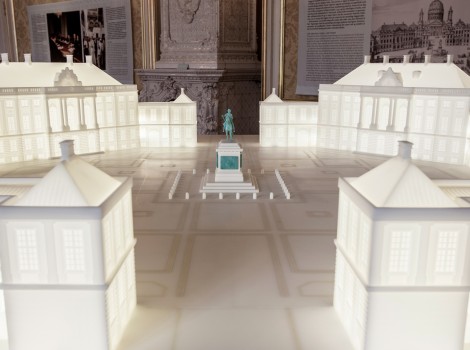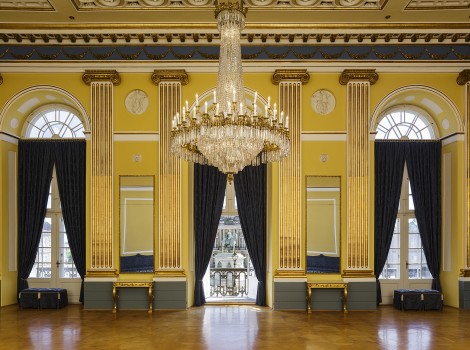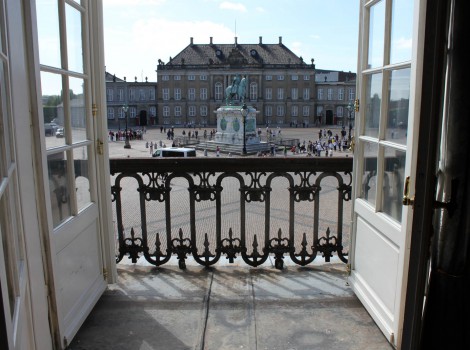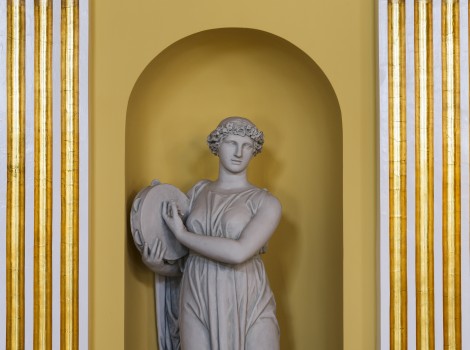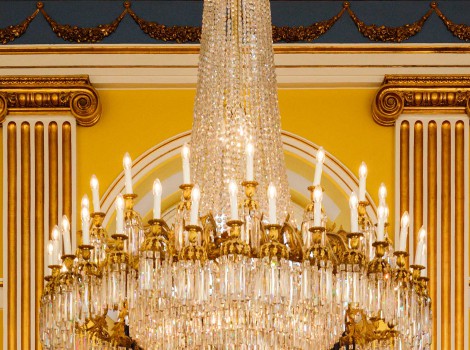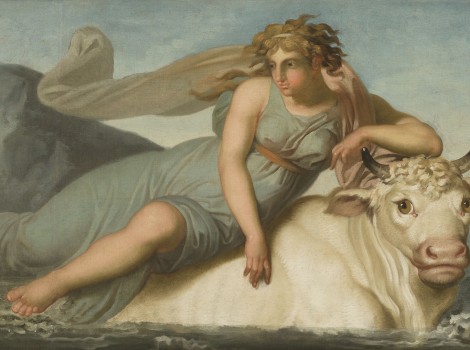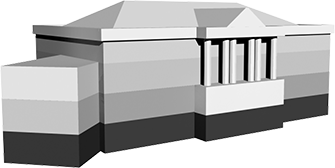The Gala Hall
This room is included in the special exhibition Frederik X: King of Tomorrow until 8 September 2024. Therefore, you will not be able to see the room in the state that is described on this page until autumn/winter 2024.
The Gala Hall is the palace’s largest room and is amongst the most beautiful interiors in Denmark. The hall was the masterpiece in Nicolai Abildgaard’s restoration of the palace, which was undertaken following the royal acquisition of Amalienborg in 1794. The Gala Hall was last renovated in the 1980s, when the interior was returned to the intentions seen in Abildgaard’s original drawings.
The style is strictly neoclassical, and the recurring yellow and blue colours give the Gala Hall a quite special atmosphere. The hall features a magnificently carved coffered ceiling, which Abildgaard had raised to 8 metres in height in order give the room more harmonious proportions.
The statues of Euterpe and Terpsichore, the Muses of choral music and flute playing, were made by a young Bertel Thorvaldsen. He presumably also executed the dance friezes, which like the vines on the console tables underline that the room was conceived for festive occasions.
 Dansk
Dansk
 English
English
 Deutsch
Deutsch

